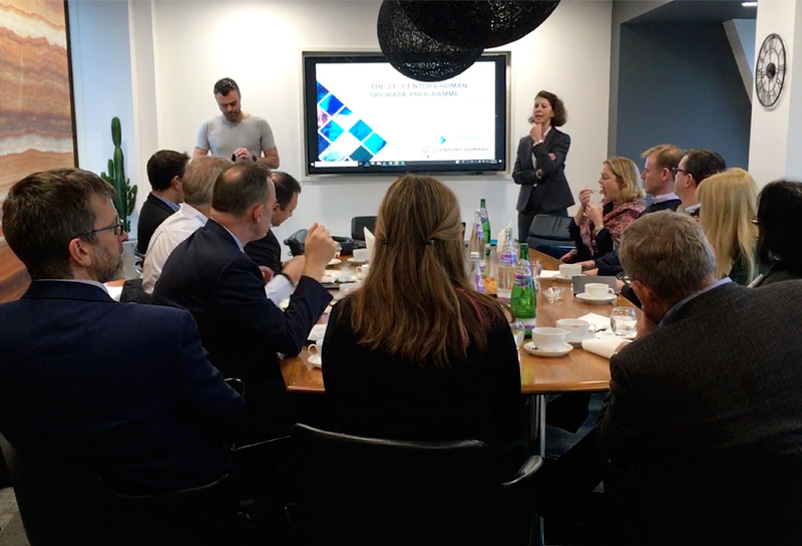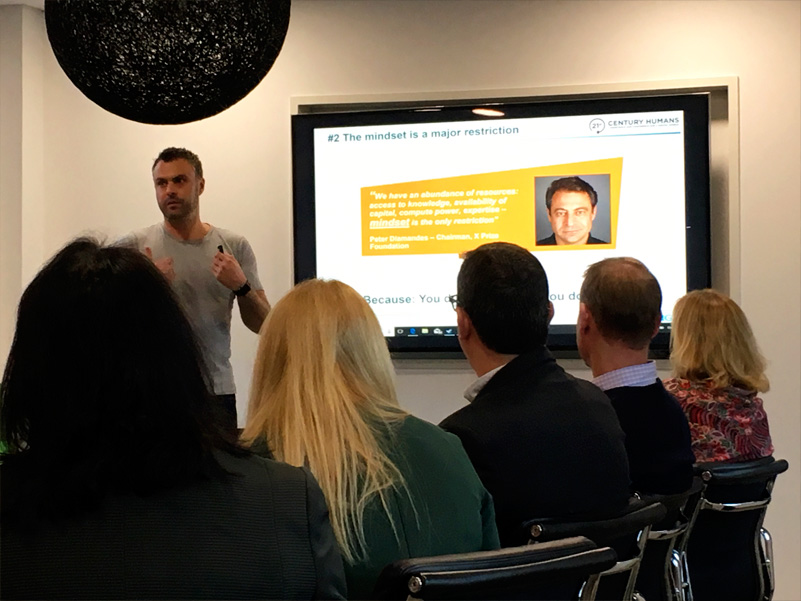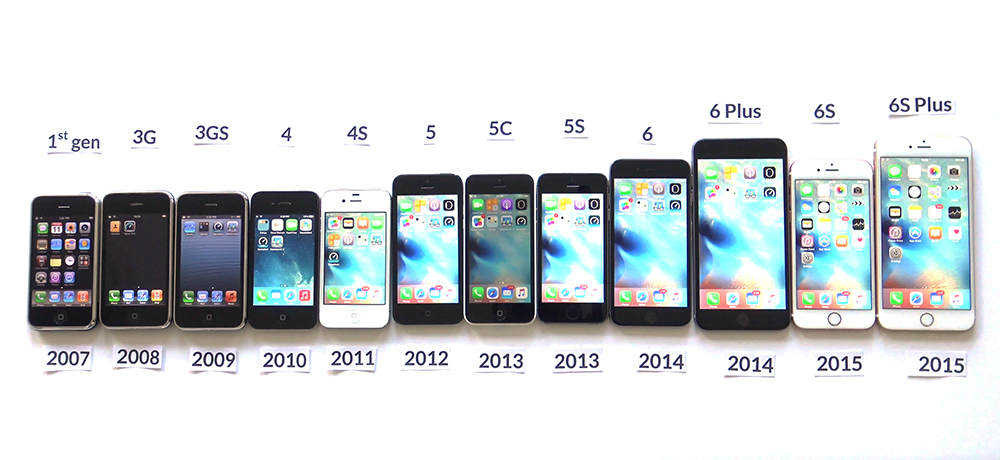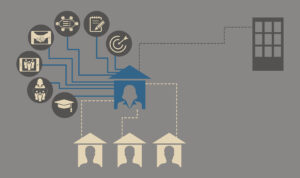We recently welcomed a number of CIOs, CTOs and CDOs for a breakfast discussion about the latest technology devices and their current and future business applications. Lewis Richards from the Leading Edge Forum led the discussion and brought with him a number of these devices, giving the senior leaders in attendance the chance to have a hands-on experience. This helped prompt a discussion about productivity in the workforce, implications for cybersecurity, technology upgrade cycles and the skill sets needed to harness the power in these new pieces of technology.
Our Invisible Digital World
In today’s world, most senior leaders have between three and five pieces of technology on them; a work phone, a personal phone, a tablet, a smartwatch and a wearable health tracker. Part of the problem with digital is that we can’t see it – the physical world still looks broadly the same as it did ten or twenty years ago. These devices are some of the few physical indications of the digital world we now live in, however, to get a sense of how much our world has really changed, the first demonstration used an iPad and an app called the ‘Architecture of Radio’. This app provides a 360-degree visualisation of the mobile phone towers, GPS satellites and Wi-Fi routers that enable our digital lives. Compared to the physical London skyline – there is a marked difference!
Using the ‘Architecture of radio’ app
The Digital Challenge for Firms
This demonstration touches on an underlying issue within the technology world. While the devices we have used have got increasingly smarter and more advanced, our ability to tap into the potential of these devices has stayed pretty much as it was a decade ago. Consider Microsoft Office – the definitive business suite of the twenty-first century. Over the last ten years, there have been four major Office releases for Windows, bringing increasingly advanced features. But how many of those features do you use today? How much of the office suite do you actually use? 5%? 10%?
The Productivity Gap
The unrealised potential within technology is a major challenge for businesses and technology leaders: if the technology is getting more advanced yet we’re still using just 10% of the functionality, we’re not going to be markedly more productive as a business. We need to help people get better at using technology. LEF sum up this issue as two main digital challenges facing firms:
1. The productivity issue – most companies, have been flatlining since 2006 fuelled by a Digital overwhelm through data, email, notifications and messages . Digital inefficiency is costing firms 20% in terms of their overall productivity.
2. Skills gap – three in four people lack digital skills and the motivation to improve them while the organisation lacks the culture to support them to change.
It’s not the technology itself that will make a business more efficient and effective, it’s helping business leaders and employees make sense of the technology available to them and make themselves and their teams more productive.
So how do we get better at using the technology around us? By improving our filtration skills, curation skills and analysis skills. To put it simply, you can’t spot the new opportunities if you are using the same approach.
The Cybersecurity Fallacy
Increasingly significant amounts of money are spent on cybersecurity within organisations, but how many apps do your employees have installed on their phones? The fallacy for tech leaders is that while we’re worried about VPN and proxy networks for individual access, each one of those hundred apps has been given permission by that individual to access their data, and even if they haven’t opened it for a while it will still be sending data back to the mothership. We spend a lot of money on cybersecurity, but almost every employee is walking around your offices sending packets of data to third-party developers as they use their personal and work phones, without them or you even knowing about it.
This is also a worry with the advancements we now see in the latest phones. Phones have looked broadly the same for the last ten years, so people naturally assume they know what they can do and how to use them. The problem is, the technology inside phones has advanced massively and 99% of people don’t know how to use this or the potential security implications of the features they have. For instance, modern phones with true depth cameras map the background of a photo as well as the foreground. So when someone in your office is Instagramming their quiche for lunch, and there’s one of your agile scrum boards in the background – that information is being captured and sent back to apple or google.
It’s the Mindset That Needs To Change
If you’re not yet convinced that it’s the mindset of employees that needs to change rather than the technology, think about knowledge centres. Like most other organisations, you have likely shifted your knowledge centre from a proprietary intranet to a wiki, then over to SharePoint, but has each incarnation made a fundamental difference to the usefulness of your knowledge centre? If not you aren’t alone. It’s because all these tools do broadly the same thing – it’s the people that are the problem, not the technology.
Now with AI starting to make its way into more businesses, people can’t afford to ignore human augmentation via technology as automation will replace a part of their jobs.
A Smarter Roadmap For Technology Upgrades
It’s common practice for technology suppliers to apply pressure to businesses by insisting on the need for them to ‘keep up’ with competitors by buying into the latest technology ecosystem that is released each year. If a business however focussed on increasing the average amount of functionality used by their employees within their current tools from say 5% to 10%, then what impact would that have on productivity? A more productive workforce then gives you the cash flow to invest in new tools. “It’s not the headset that’s important – it’s the mindset”.
Inspiring Talent Within Your Organisation
Finally, the real question is, as a technology leader, how are you giving talent within your organisation exposure to the tools that empower them and harnesses their ability? For example, a group of engineers from an infrastructure company, who after seeing a 3D modelling attachment in action, realised that it could provide a solution to a problem that was costing their business millions of pounds a year. They partnered with a local university to develop the idea, and ultimately the business won an innovation award and now sells that system to other infrastructure businesses which have the same problem. This type of innovation is only possible however when a business allows its employees to get hands-on with technology and are given a chance to explore and play with innovations.
Technology advancement is both exciting and daunting, and business leaders have a responsibility to challenge themselves and expose themselves to this technology, to adjust their mindset and encourage the rest of their team to do the same.








